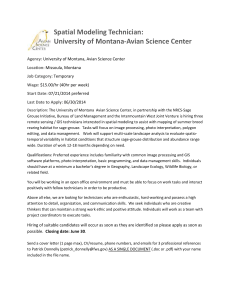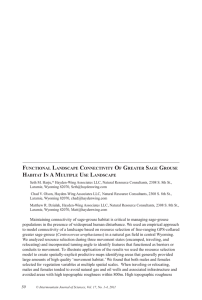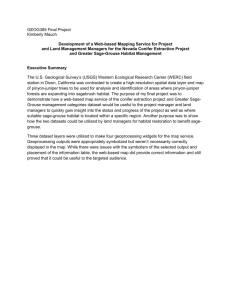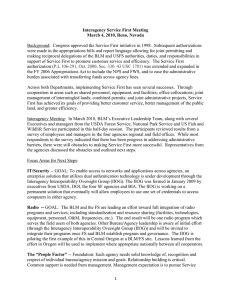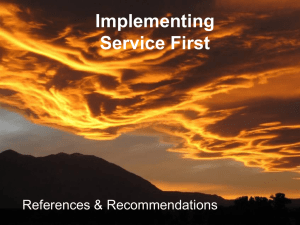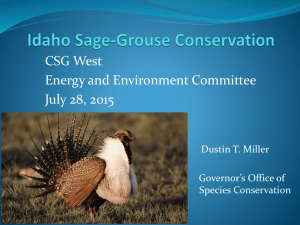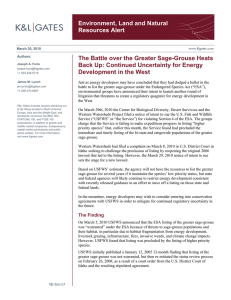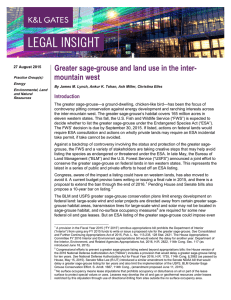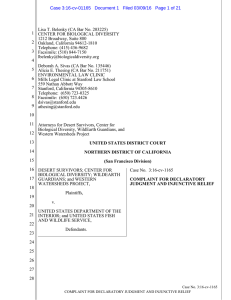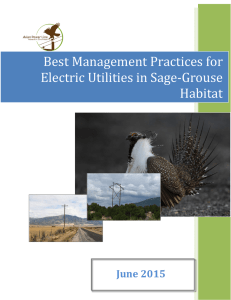blM’ n g s
advertisement
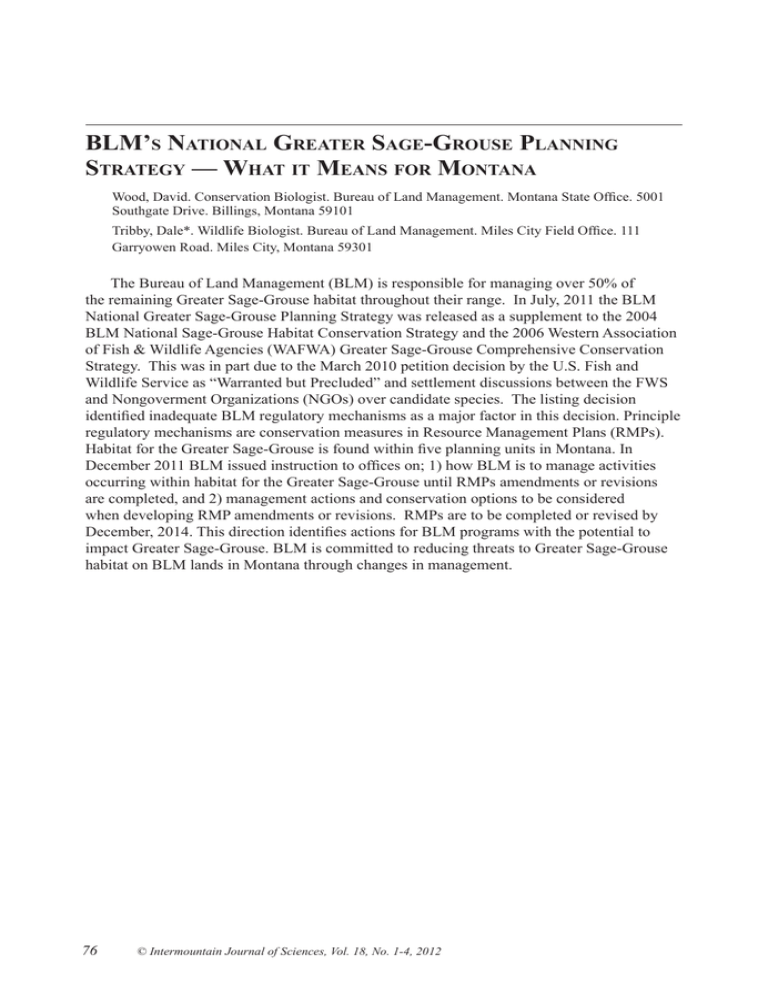
BLM’s National Greater Sage-Grouse Planning Strategy — What it Means for Montana Wood, David. Conservation Biologist. Bureau of Land Management. Montana State Office. 5001 Southgate Drive. Billings, Montana 59101 Tribby, Dale*. Wildlife Biologist. Bureau of Land Management. Miles City Field Office. 111 Garryowen Road. Miles City, Montana 59301 The Bureau of Land Management (BLM) is responsible for managing over 50% of the remaining Greater Sage-Grouse habitat throughout their range. In July, 2011 the BLM National Greater Sage-Grouse Planning Strategy was released as a supplement to the 2004 BLM National Sage-Grouse Habitat Conservation Strategy and the 2006 Western Association of Fish & Wildlife Agencies (WAFWA) Greater Sage-Grouse Comprehensive Conservation Strategy. This was in part due to the March 2010 petition decision by the U.S. Fish and Wildlife Service as “Warranted but Precluded” and settlement discussions between the FWS and Nongoverment Organizations (NGOs) over candidate species. The listing decision identified inadequate BLM regulatory mechanisms as a major factor in this decision. Principle regulatory mechanisms are conservation measures in Resource Management Plans (RMPs). Habitat for the Greater Sage-Grouse is found within five planning units in Montana. In December 2011 BLM issued instruction to offices on; 1) how BLM is to manage activities occurring within habitat for the Greater Sage-Grouse until RMPs amendments or revisions are completed, and 2) management actions and conservation options to be considered when developing RMP amendments or revisions. RMPs are to be completed or revised by December, 2014. This direction identifies actions for BLM programs with the potential to impact Greater Sage-Grouse. BLM is committed to reducing threats to Greater Sage-Grouse habitat on BLM lands in Montana through changes in management. 76 © Intermountain Journal of Sciences, Vol. 18, No. 1-4, 2012
